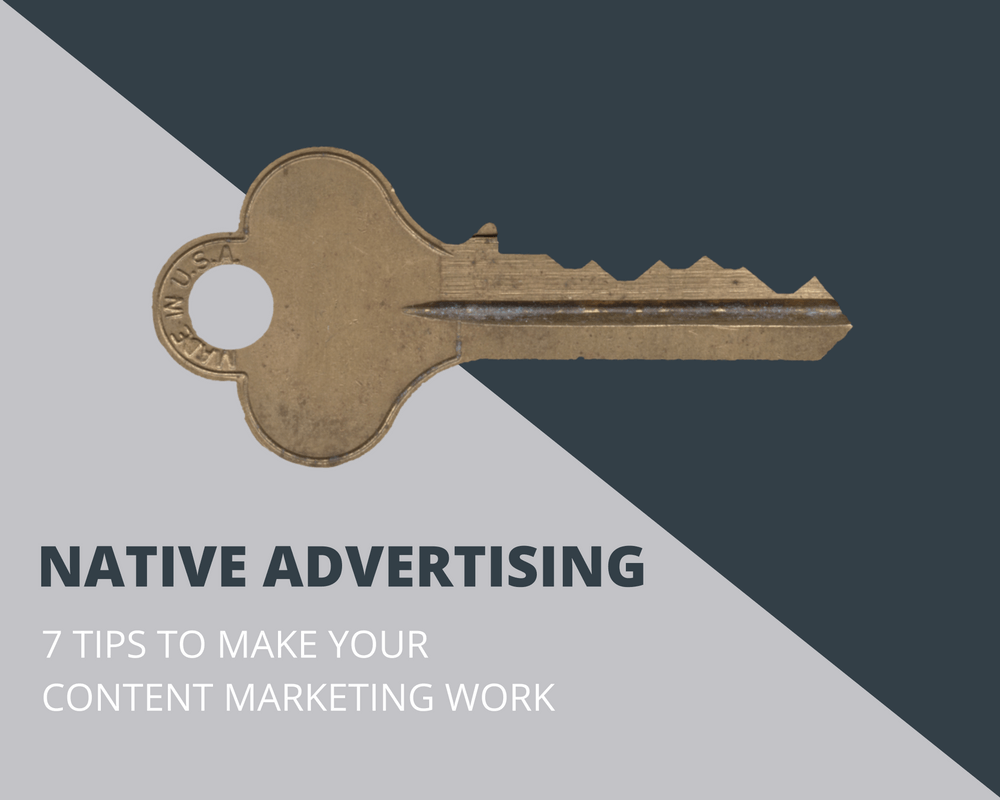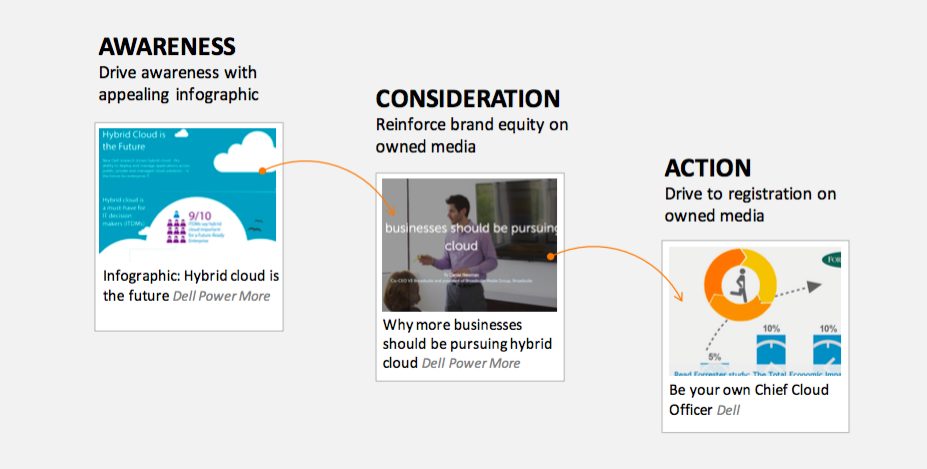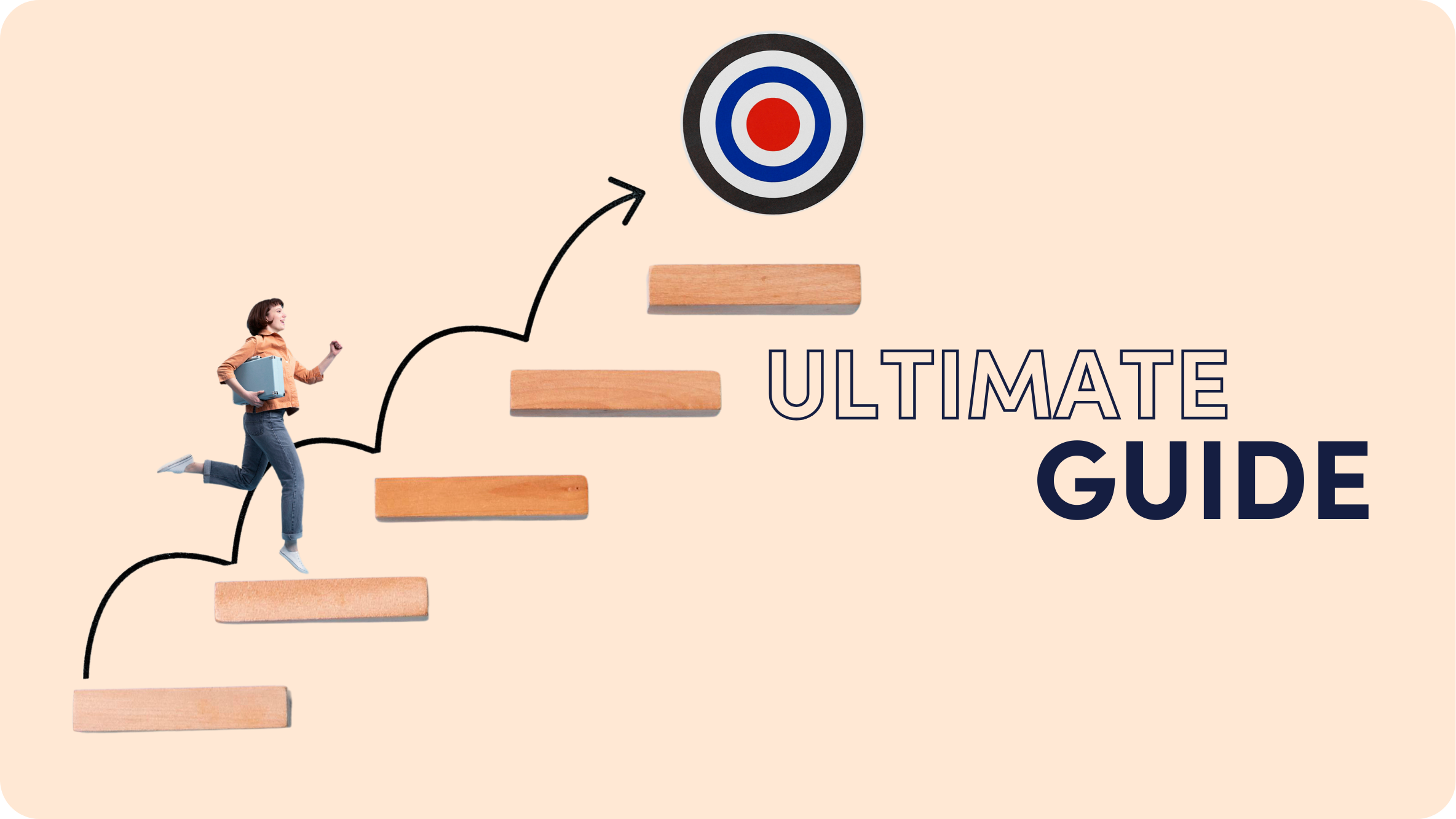Native Advertising: 7 Tips to Make Your Content Marketing Work

In recent years, native advertising has experienced a major boom. More and more publishers are giving shelf space to native placements on their properties. But what’s behind this trend?
We Now Spend One-Third of Our Day Consuming Content
Let’s start with the basics. Today, on average, we spend one-third of our day consuming content. That’s a total of eight hours. This is what people want and are motivated to do—not shop.
However, that’s problematic for marketers, because our primary goal is to get them to buy things. So what did we do? We responded by pushing banners, pre-rolls, pop-ups, you name it—anything to try to interfere, and interrupt and get them to shop.
At first, they just ignored us. Really ignored us. This graph stops at 2007… as it literally shows the point at which we hit the close to 0% CTR that we have been at ever since.
Ad Blockers
And now, they’ve started to actively block us. There’s been 48% growth in ad blocking year over year. This causes the price of regular ads to go up too dramatically.
And it’s challenging the ROI of traditional online marketing such as Google and Facebook. No surprise then that performance marketers are turning to content marketing and native advertising solutions like Outbrain in order to generate sales.
The Shift to Content Marketing
There’s no doubt that performance marketers see content marketing’s potential. In fact, 22% of performance marketers cited content marketing as the activity with the greatest commercial impact in 2016. The second runner-up, Big Data, only came in at 17%. (Digital Marketing Trends for 2015, Smart Insights, Feb 2016)
And yet, after seeing thousands of these performance marketers practice content marketing and fail, there’s still a lot to learn in order to succeed in using content marketing to gain business traction.
Here’s the 7 tips to remember:
- Don’t be a Jerk
- Define a Content Strategy
- Build Audience Segments with the Right Content
- Re-engage Audience Segments with Content
- Sequence Your Content
- Learn How to Measure KPIs
- There is No Silver Bullet
1. Don’t be a Jerk
Yes… you know what I’m talking about. Your customers are smart, know what they want (remember those adblockers?) and can easily tell the difference between content that gives them value versus content that’s just trying to get their credit card info. Make sure you respect them and provide content that gives them value. It’s much harder to fool them than Google’s algorithm for SEO purposes.
2. Define a Content Strategy
Just like any other marketing strategy, it all starts with the customer. Once you identify your target persona think about the right time, vehicle, and place to deliver your message. Once you have your strategy in place creating great and relevant content gets much easier.
3. Build Audience Segments with the Right Content
Obviously, not all customers are the same. With content, it’s quite easy and cost-effective to identify and tag customers with a dedicated piece of content and bucket them into the right segment. Once your segments are built properly, re-engaging them is much easier.
4. Re-engage Audience Segments with Content
Once your audience is bucketed into the right place, it’s much easier to re-engage with those that didn’t convert. All the major platforms (including Outbrain Custom Audiences) now allow the use of first-party data, which enables you to get in front of your audience in a much smarter way. And while retargeting is not a new thing, I’ll bet that not all of you are doing it with content.
For example, take One King’s Lane, the leading U.S. home interiors retailer. As an e-commerce business, it has to be on top of every dollar it spends—all of it is ROI based.
It jumped on the content train a while ago, identifying its target persons and retargeting these customers with relevant content. To simplify, if someone was looking for outdoor furniture, One Kings Lane would target them with a piece on the “Hottest outdoor furniture trends for summer 2016.” Overall, it doubled the value of the money spent.
5. Sequence Your Content
So every marketing campaign wants to communicate a story, right? The story doesn’t start at the bottom of the customer’s purchase journey, but is the culmination of many stories that take them down that funnel.
As marketers, you want to own these stories so you can increase the chances of meeting your customers at the transaction stage. And I’m sure you’ll agree there are much better ways to tell that story than by placing a call to action in Google Search or a banner on a targeted website.
Think about your customer’s journey and where they are positioned within the traditional funnel. Each step has a different story that fits that stage and different KPIs to measure and optimize against. This is why you need to make sure that you tell your story in the right order so that the messages won’t get mixed and you have maximum impact.
Let’s say you are Dell and trying to get customers to move to your cloud storage service. You could then create a content strategy that tells the right story at every step of the funnel. For example, a general infographic at the top of the funnel and a very targeted piece about their solution once the customers are more engaged. That would also be the right time to increase your direct response media budgets. You can read more here about how automotive brand SEAT employed this type of strategy.

6. Learn How to Measure KPIs
We’ve already stated that content is new to many of us. One of the things we see with almost every new customer that enters the playing field, is that they need to adjust the way they think about ROI and how to measure their content performance.
This is a topic that could itself fill a series of blog posts. However, here, I want to highlight one thing. I assume a lot of you are using Google Analytics to track your performance, but this goes for any platform you use to measure your performance. The default attribution model of Google Analytics is based on “Last non-direct click.” You can read a little more about this here, but the key takeaway is that this obviously gives less credit to all the efforts you have made before the customer reaches a decision to purchase.
Let’s remember, however, nobody goes to bed at night, dreams about your website or product, wakes up in the morning and jumps online to search for it. If you check your stats, based on different attribution models, like “first interaction,” I’m sure you’ll find that other channels are working much better than you thought.
7. And Finally… There is No Silver Bullet
Remember, content marketing is an evolving field and as such requires a lot of investment, learning and trial and error in different models. It requires that you change your traditional approach and re-imagine the customer journey. Overall, think pull and not push and connect with the customer at each stage of the funnel.
There’s no doubt that content marketing is a huge opportunity for performance marketers. However, it is important to understand what works and execute strategically. Remember, your customers aren’t fooled easily. To hit your KPIs, you need to provide value to the right audience at the right time—and you need to be prepared to continually test and learn.
____________________________________________________________________________
To learn more about how Outbrain can help with your content marketing, contact our experts today.










